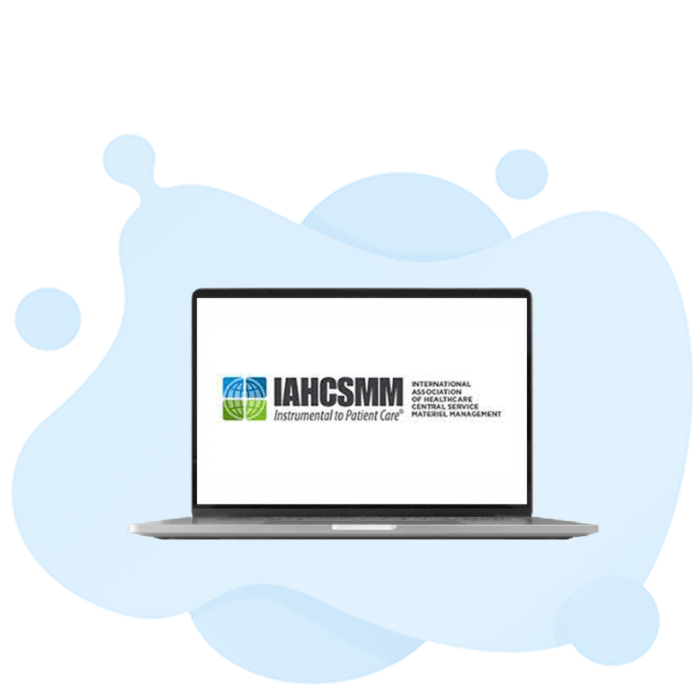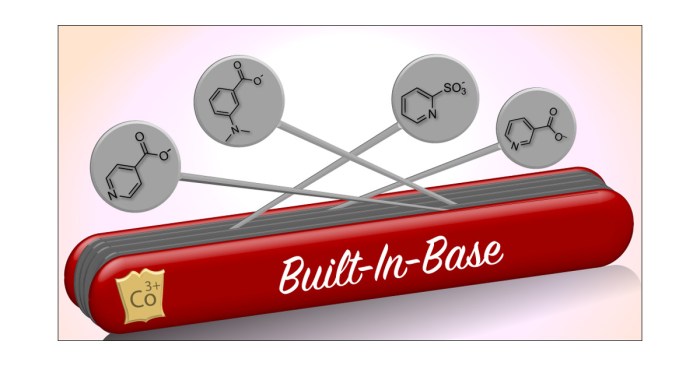Embark on a comprehensive exploration of IAHCSMM Practice Test Chapter 10, a crucial resource for healthcare professionals seeking to excel in infection control and sterilization practices. This chapter delves into essential concepts, exam preparation strategies, and practical applications, equipping you with the knowledge and skills necessary to succeed in your certification journey.
Delving into the intricacies of infection control, sterilization, and aseptic technique, this chapter provides a solid foundation for understanding the principles and best practices that safeguard patient safety and promote optimal healthcare outcomes.
IAHCSMM Practice Test Chapter 10

The IAHCSMM Practice Test Chapter 10 is designed to help healthcare professionals prepare for the IAHCSMM certification exam. The test covers a wide range of topics related to healthcare management, including:
- Healthcare Delivery Models
- Healthcare Finance
- Healthcare Human Resources
- Healthcare Information Management
- Healthcare Quality and Safety
The test is divided into five sections, each of which covers a different topic area. Each section contains multiple-choice questions, true/false questions, and essay questions. The test is timed, and test-takers have three hours to complete the entire test.
Healthcare Delivery Models
This section covers the different types of healthcare delivery models, including:
- Fee-for-service
- Capitation
- Managed care
- Integrated delivery systems
- Accountable care organizations
This section also covers the advantages and disadvantages of each type of delivery model.
Understanding the Exam Format

The IAHCSMM Practice Test Chapter 10 follows a standardized format designed to assess candidates’ knowledge and understanding of the material covered in Chapter 10.
The test comprises multiple-choice questions, each carrying varying point values based on the complexity and depth of knowledge required to answer them correctly.
Question Types
- Multiple Choice:These questions present candidates with a question or statement followed by several answer choices. Candidates must select the single best answer from the options provided.
- True/False:These questions require candidates to determine whether a given statement is true or false.
- Fill-in-the-Blank:These questions present candidates with a statement with one or more blanks. Candidates must fill in the blanks with the correct terms or phrases.
Point Values
The point values for each question type are as follows:
- Multiple Choice: 1 point
- True/False: 0.5 points
- Fill-in-the-Blank: 0.5 points for each blank
Exam Preparation Strategies
To excel in the IAHCSMM Practice Test Chapter 10, a comprehensive and strategic approach to exam preparation is crucial. This involves adopting effective study techniques, managing time efficiently, and developing strategies for stress reduction during the exam.
Effective Study Techniques
- Active Recall:Engage in active recall by periodically testing yourself on the concepts covered in the chapter. This helps reinforce learning and improves retention.
- Spaced Repetition:Review the material at increasing intervals to strengthen memory. This technique ensures that the information is not forgotten and is easily accessible during the exam.
- Chunking:Break down the vast amount of information into smaller, manageable chunks. This makes the material easier to comprehend and recall.
- Flashcards:Utilize flashcards to quiz yourself on key concepts, definitions, and formulas. This provides a quick and effective way to review and reinforce learning.
- Practice Questions:Engage in solving practice questions and mock exams to familiarize yourself with the exam format and question types.
Time Management and Stress Reduction
Time management and stress reduction are essential for success in the exam. Here are some strategies to consider:
- Prioritize Tasks:Identify the most important concepts and focus on mastering them first. This ensures that you allocate your time wisely.
- Set Realistic Goals:Establish achievable study goals and break them down into smaller tasks. This prevents feeling overwhelmed and promotes a sense of accomplishment.
- Take Breaks:Regular breaks help improve focus and prevent burnout. Use these breaks to step away from the material and engage in activities that relax you.
- Deep Breathing Exercises:Practice deep breathing exercises before and during the exam to calm your nerves and reduce stress.
- Positive Self-Talk:Engage in positive self-talk to boost your confidence and reduce anxiety. Remind yourself of your strengths and abilities.
Content Review: Infection Control
Infection control is a critical aspect of healthcare, aiming to prevent the spread of infections and protect patients, healthcare workers, and the community. It involves understanding transmission modes, implementing preventive measures, and adhering to isolation protocols.
Transmission Modes
Microorganisms can be transmitted through various modes, including:
- Contact Transmission:Direct or indirect contact with an infected person or contaminated surfaces.
- Droplet Transmission:Inhalation of respiratory droplets produced by an infected person.
- Airborne Transmission:Inhalation of airborne particles containing microorganisms that can remain suspended in the air for extended periods.
- Vector-Borne Transmission:Transmission through vectors such as insects or animals.
Prevention Measures
Infection control measures include:
- Hand Hygiene:Regular and thorough handwashing with soap and water or alcohol-based hand sanitizer.
- Personal Protective Equipment (PPE):Wearing gloves, gowns, masks, and eye protection when necessary.
- Environmental Cleaning and Disinfection:Regular cleaning and disinfection of surfaces and equipment.
- Vaccination:Immunization against preventable infections.
- Isolation:Separating infected individuals from non-infected individuals to prevent transmission.
Isolation Protocols
Isolation protocols are implemented to prevent the spread of infections and protect vulnerable individuals. Different types of isolation include:
- Standard Precautions:Applied to all patients, regardless of infection status, to prevent the transmission of common pathogens.
- Contact Precautions:Used for patients with infections that can be spread through direct or indirect contact.
- Droplet Precautions:Implemented for patients with infections that can be transmitted through respiratory droplets.
- Airborne Precautions:Required for patients with infections that can be transmitted through airborne particles.
Content Review: Sterilization and Disinfection
Sterilization and disinfection are essential processes in healthcare settings to prevent the spread of infection. Sterilization eliminates all microorganisms, including bacteria, viruses, and fungi, while disinfection reduces the number of microorganisms to a safe level.
Sterilization Methods
- Autoclaving:Uses steam under pressure to sterilize medical devices and equipment.
- Dry heat:Uses hot air to sterilize glassware and metal instruments.
- Radiation:Uses gamma or electron beam radiation to sterilize medical devices and implants.
- Ethylene oxide (EtO):Uses a gas to sterilize temperature-sensitive items such as plastics and electronics.
Disinfection Methods
- Chlorine-based solutions:Used to disinfect surfaces and equipment.
- Alcohol-based solutions:Used to disinfect hands and small surfaces.
- Ultraviolet (UV) light:Used to disinfect air and surfaces in healthcare facilities.
- Ozone:Used to disinfect air and surfaces in hospitals and other healthcare settings.
Sterilization Process Flowchart
The sterilization process typically involves the following steps:
- Cleaning:Remove visible dirt and debris.
- Packaging:Place items in appropriate sterilization packaging.
- Sterilization:Use an appropriate sterilization method.
- Storage:Store sterilized items in a sterile environment.
- Monitoring:Regularly monitor sterilization equipment to ensure proper functioning.
Content Review: Aseptic Technique
Aseptic technique refers to a set of practices and procedures designed to prevent the introduction of microorganisms into sterile areas or tissues.
Aseptic technique is essential in healthcare settings to prevent the spread of infections and ensure patient safety. It involves the use of sterile equipment, maintaining a sterile field, and proper hand hygiene.
Examples of Aseptic Techniques
- Using sterile gloves and gowns during surgical procedures
- Disinfecting surfaces before and after patient contact
- Using sterile instruments for injections and other invasive procedures
- Maintaining a sterile field during wound care
- Proper handling and disposal of contaminated materials
Best Practices for Maintaining Aseptic Conditions, Iahcsmm practice test chapter 10
- Always use sterile equipment and supplies.
- Maintain a sterile field by limiting access and avoiding contamination.
- Practice proper hand hygiene before and after handling sterile items.
- Use appropriate personal protective equipment (PPE) when necessary.
- Dispose of contaminated materials promptly and properly.
- Monitor and evaluate aseptic techniques regularly to ensure compliance.
Content Review: Waste Management: Iahcsmm Practice Test Chapter 10

Effective waste management is crucial in healthcare settings to protect patients, staff, and the environment from hazardous materials. Understanding the principles and regulations related to waste management is essential for healthcare professionals to ensure proper disposal and minimize potential risks.
Categories of Medical Waste
Medical waste is classified into various categories based on its characteristics and potential hazards. Proper disposal methods are determined according to these categories:
| Category | Description | Disposal Method |
|---|---|---|
| Sharps | Needles, syringes, blades, and other sharp objects | Puncture-resistant containers |
| Infectious Waste | Materials contaminated with infectious agents | Incineration, chemical disinfection, or autoclaving |
| Pathological Waste | Body parts, tissues, and organs | Incineration or burial |
| Pharmaceutical Waste | Expired or unused drugs and pharmaceuticals | Special incineration or disposal through authorized waste management companies |
| Radioactive Waste | Materials contaminated with radioactive substances | Special handling and disposal according to radiation safety regulations |
| General Waste | Non-hazardous waste that does not pose any immediate risk | Landfill or recycling |
Content Review: Quality Assurance
Quality assurance is a critical aspect of healthcare settings, ensuring the provision of safe, effective, and patient-centered care. It involves the systematic monitoring and evaluation of healthcare processes to identify areas for improvement and maintain high standards.
Key Elements of a Quality Assurance Program
A comprehensive quality assurance program typically includes the following key elements:
- Establishment of standards:Defining specific criteria and benchmarks for measuring performance.
- Monitoring and data collection:Regularly collecting and analyzing data on key performance indicators (KPIs).
- Corrective action:Implementing measures to address identified deficiencies and improve performance.
- Continuous improvement:Regularly reviewing and updating the quality assurance program to ensure its effectiveness and alignment with changing needs.
li> Performance evaluation:Assessing performance against established standards and identifying areas for improvement.
Examples of Quality Assurance Measures
Healthcare organizations implement various quality assurance measures to enhance the quality of care. Some common examples include:
- Patient satisfaction surveys:Collecting feedback from patients to assess their satisfaction with care and identify areas for improvement.
- Infection control audits:Monitoring compliance with infection control protocols to prevent the spread of infections.
- Medication error reporting systems:Tracking and analyzing medication errors to identify potential causes and develop preventive measures.
- Peer review programs:Encouraging healthcare professionals to review and critique each other’s work to identify areas for improvement.
- Continuous quality improvement (CQI) initiatives:Implementing ongoing efforts to improve processes and outcomes through data analysis and feedback loops.
Essential FAQs
What is the purpose of IAHCSMM Practice Test Chapter 10?
IAHCSMM Practice Test Chapter 10 is designed to provide healthcare professionals with a comprehensive review of key concepts related to infection control, sterilization, and other essential practices, preparing them for the IAHCSMM certification exam.
What types of questions are included in the IAHCSMM Practice Test Chapter 10?
The practice test includes a variety of question types, such as multiple choice, true/false, and short answer questions, covering a range of topics within the chapter.
How can I effectively prepare for the IAHCSMM Practice Test Chapter 10?
Effective preparation involves reviewing the chapter content thoroughly, practicing with sample questions, and utilizing study techniques such as spaced repetition and active recall.